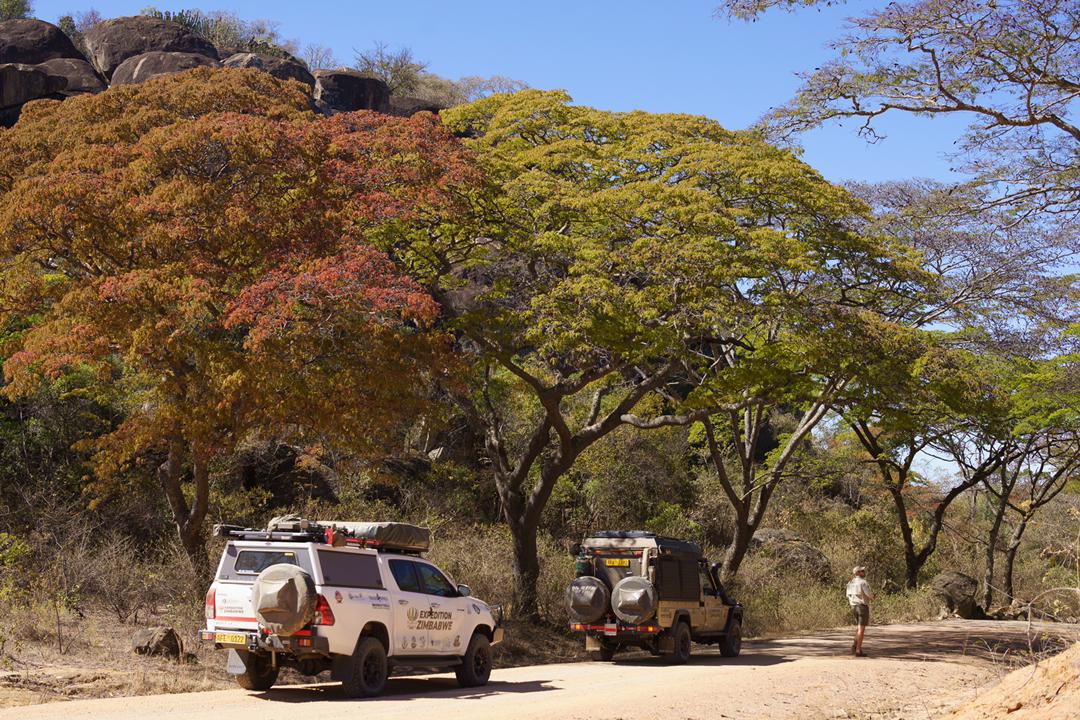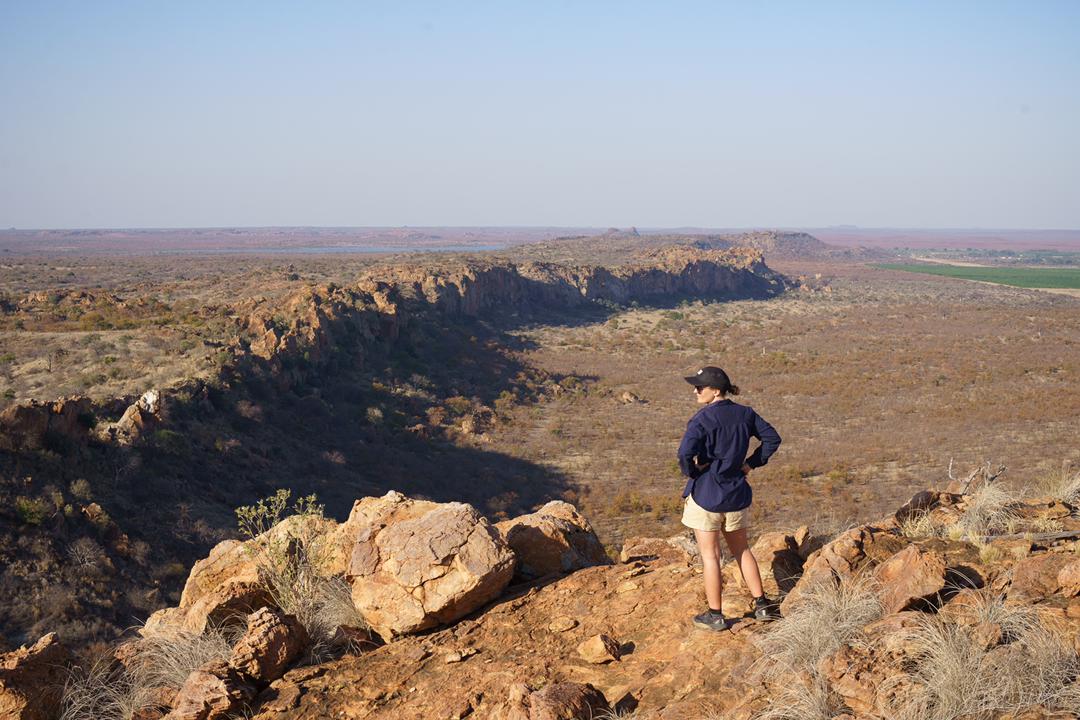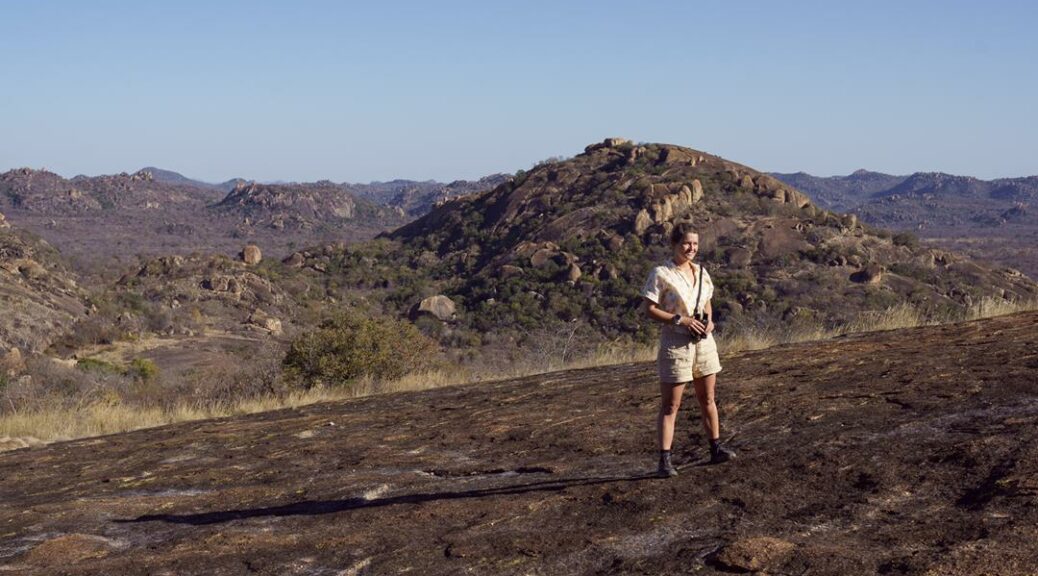Making its way south, Expedition Zimbabwe visited the one-of-a-kind Matobo National Park as well as wild spaces on the South African border.
Named a World Heritage Site in 2003 for its cultural landscape, Matobo National Park should be on any visitor’s itinerary. Although it lies just 30 minutes outside Bulawayo, it is a world apart. “Otherworldly,” according to Expedition Zimbabwe’s Jo Craig. The team visited the Matobo Hills at the start of week 4 for the expedition.
In the park, large granite boulders dot the horizon and form a unique backdrop for the area’s wildlife. Even more impressive is what these rocky domes conceal: rock art dating back 13,000 years. The abundance of paintings means the park is home to one of the highest concentrations of rock art in Southern Africa.

“Matobo is somewhere that requires a good couple of days, say three at the least, to visit the caves and read the messages left by the area’s ancestors. To climb the peaks, search for signs of rhino and leopard, cast a rod, count black eagles and just get lost in the time warp between now and many millions of years ago. Remarkably little has changed and that in itself is a reason to linger a little longer,” writes Jo.
Travel tips
The park’s compact size (440km2) offers a welcome break from driving long distances. Take the opportunity to explore on foot and visit various caves to view rock art. Bambata Cave is an easy 30 minute walk up the granite slopes.
The dirt road south to Gwanda (and on towards the Tuli Circle) is a beautiful scenic drive.

Trek through Tuli and Beitbridge West
To reach the Tuli Circle, Expedition Zimbabwe drove through rolling granite hills and msasa trees in spring colours. The stretch towards the Shashe River via Guyu and Hwali looked like a moonscape: arid and barren. It’s properly off the beaten track and you’ll need to be adventurous, well informed and prepared, the team reports.
The Tuli area is known to many as the setting for the Tour de Tuli mountain bike adventure. The cycle event was first held to showcase the newly formed Greater Mapungubwe Transfrontier Conservation Area. Although the Tour de Tuli has become a popular fixture, visits to the Zimbabwean side outside the event are still minimal.

The area remains undeveloped and remote – aspects that hamper mainstream tourism but appeal to overlanders. “As self-drive enthusiasts, we seek the road less travelled and the sense of adventure that involves. We seek solitude, wild open spaces, challenging routes and beautiful vistas,” writes Graeme Sharp.
He sees potential for a self-drive route off tar from Beitbridge through the Tuli Circle and Matobo Hills and onto Hwange. Locally tourism plans are in progress to make this a reality. Conservancy discussions are nearing completion and the community is on board, he reports.
Travel tips
At Fort Tuli, visitors can see the ruins of the territory’s first jail.
Excavations of the bedrock on Sentinel Ranch has turned up an impressive collection of fossilised dinosaur bones. Book visits with Vanessa (+263 712 230 708) or Digby (+27 83 285 0064) or email dbristow@limpopo.co.za. Cellphone signal can be unreliable so WhatsApp is best. Appointments essential.



Last visit 2 years ago, just in and out through Pandamatenga border from Botswana directly into Hwange N.P. for a few days. Conclusion: Zimbabwe is practically off-limits for private visitors. Prices like in New York for very, very poor services, almost no game… No thanks! They have destroyed their country.
We have travelled Zimbabwe extensive in the past, last time 8 years ago. Until the birder crossings become tourist friendly, extortion and attitude to intimidate, Zimbabwe will not attain its potential as a destination for overlanders. No matter how adventurous you are. We always travelled alone, maybe suitable to convoys.
The reservation of accomodation in Parks through there offices also proof difficult.
Expedition Zimbabwe is part of a wider tourism effort led by the Zimbabwe Professional Guides Association to make the country more accessible to overlanders. Apparently this will include initiatives to streamline border formalities.
Wow! Sudden flood of memories.. The matopos hills park.. Tuli… I was stationed there in the late 1978/79 era BSAP. A visit back in time ..